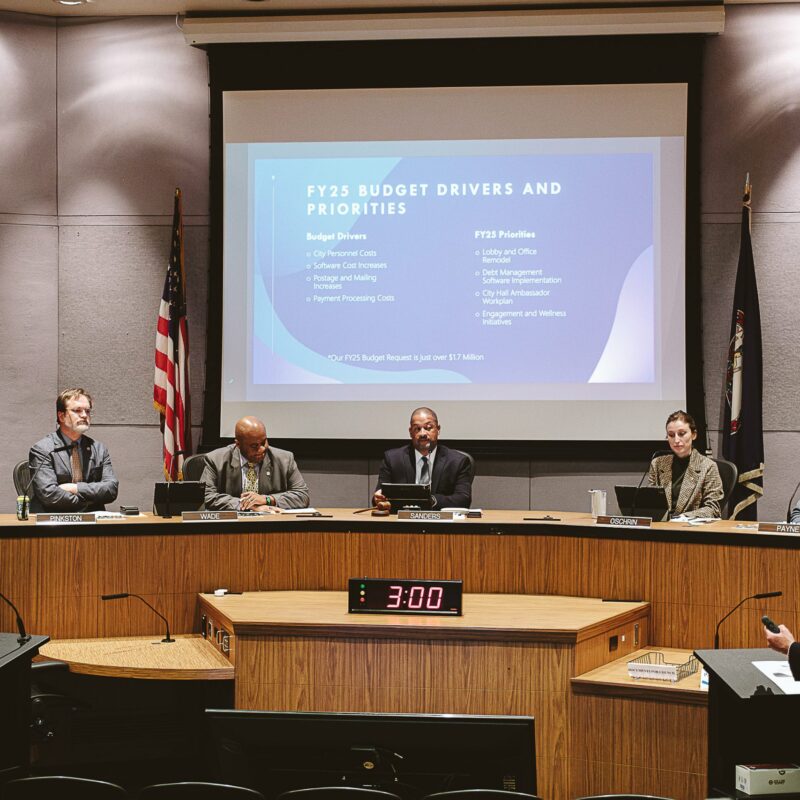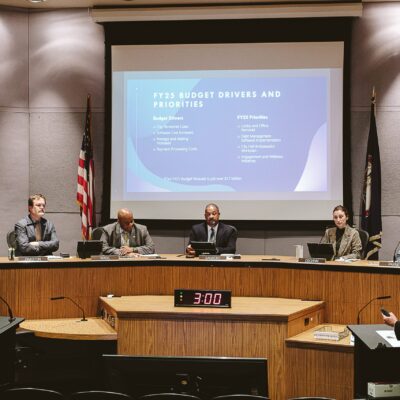Despite all the button-busting, broad-chested swagger of the steeled human sculptures that form the skyline of Michael Chabon’s Pulitzer Prize-winning novel, The Amazing Adventures of Kavalier and Clay—the Orson Welles drive to destroy something immense like a planet or a media structure, or the Harry Houdini pairing of ingenuity and stubbornness, superpowers grappling with human bodies—the novel’s end holds a still and silent power, like ice. Chabon’s epic snaps the spine of comic book history and shakes out the stuff within, amassing a collection of cultural odds, historical ends and bits of what he calls “genre fiction.”
 Wonder what’s in a wonder boy? Pulitzer Prize-winning author Michael Chabon sticks up for his bag of tricks in his first collection of nonfiction, Maps and Legends. |
But the sound of that break is brutally quick and quiet; this is the way the novel ends, not with a bang but a whisper, a shuddering hush of characters dealing with forces so large that Chabon’s characters can only conceive of them in crackling Jack Kirby comic book panels and colors, the hues and hugeness packaged as “entertainment.” As Chabon points out in the opening essay of Maps and Legends, his first collection of nonfiction: “No self-respecting literary genius…would ever describe him- or herself as primarily an ‘entertainer.’”
“An entertainer,” he clarifies, “is a man in a sequined dinner jacket, singing ‘She’s a Lady’ to a hall filled with women rubber-banding their underpants.”
Like a good number of the McSweeney’s publishing collective (helmed by literary flare gun Dave Eggers), Chabon is consumed with the drive to unsully the works of writers resigned to the specialty sections of bookshops—what keeps Dashiell Hammett and H.P. Lovecraft from Herman Melville and Philip Roth, “consigned to the genre slums,” as the writer puts it? Chabon opens with a recipe for the salvation of short fiction that amounts to a mulligan stew of trivialized literary movements, spritzing the mess in his cauldron with the type of hyperbolic language you might expect of each lesser ingredient.
The rest of Chabon’s collection is split between book reviews and overviews (dredging up gold-flecked literary nuggets from Sir Arthur Conan Doyle and sci-fi writer/His Dark Materials author Philip Pullman) and anecdotes surrounding the creation of his reputable novels, focusing on the ones that raised critical eyebrows or ire. A good deal of the material was published in some piecemeal form previously (about a third of the essays ran in the New York Review of Books, including Chabon’s fantastic reading of Cormac McCarthy’s The Road as a masterful paternal nightmare). And, while Chabon’s critical pieces sag a bit, his comic convention-ish, cape-donning fandom is enough to propel or amuse readers through his ruminations on the ruin of writers that deal in pulp or the outer limits.
It’s during Chabon’s personal pieces, however—the Gatsby and Roth pantomiming that encouraged his first hit, The Mysteries of Pittsburgh; the Internet message board backlash that greeted an essay on Yiddish slang and inspired The Yiddish Policemen’s Union—that Maps and Legends manages to make the most of the scraps Chabon sweeps up and slings together. For every failing convergence of tidbits in Maps and Legends, two or three mix like vinegar and baking soda in a wide-eyed child’s rocket.





